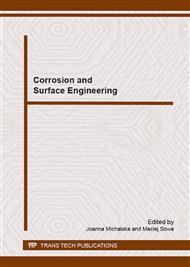p.203
p.207
p.213
p.217
p.221
p.225
p.229
p.233
p.239
Comparison of Human Health and Safety Loss due to Corroded Gas Pipeline Failure in Rural and Urban Areas: A Case Study in Malaysia
Abstract:
Consequence assessment is an integral part of the risk assessment process. There are many types of consequences loss due to pipeline failure such as asset loss, environmental loss, production loss, and human health and safety loss (HHSL). This paper studies the comparison of HHSL between rural and urban areas due to pipeline failure subject to corrosion. The damage area of the explosion was calculated using Aloha software by considering the details of the selected sites such as atmospheric and topographical conditions. The HHSL was calculated using a mathematical equation of quantitative risk assessment in terms of the number of fatalities or injuries or both. The results of the assessments from rural and urban areas were then compared with one another to identify any significant dissimilarity. This study shows that there was a possibility to improve the decisive value of risk by implementing the proposed approach in consequence assessment in Malaysia.
Info:
Periodical:
Pages:
221-224
Citation:
Online since:
January 2015
Keywords:
Price:
Сopyright:
© 2015 Trans Tech Publications Ltd. All Rights Reserved
Share:
Citation:


